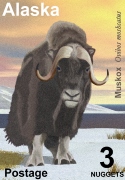Puffins are hunted for eggs, feathers and meat. Atlantic Puffin populations drastically declined due to habitat destruction and exploitation during the 19th century and early 20th century. They continue to be hunted in Iceland and the Faroe Islands.
The Atlantic Puffin forms part of the national diet in Iceland, where the species does not have legal protection. Puffins are hunted by a technique called “sky fishing”, which involves catching low-flying birds with a big net. Their meat is commonly featured on hotel menus. The fresh heart of a puffin is eaten raw as a traditional Icelandic delicacy.
SOS Puffin is a conservation project based from the Scottish Seabird Centre at North Berwick to save the puffins on islands in the Firth of Forth. Puffin numbers on the island of Craigleith, once one of the largest colonies in Scotland, with 28,000 pairs, have crashed to just a few thousand due to the invasion of Tree Mallow, an exotic plant which has taken over the island and prevented the puffins from accessing their burrows and breeding. The project has the support of over 450 volunteers and progress is being made with puffins returning in numbers to breed this year.
SOS Puffin: http://www.seabird.org/sospuffin.asp
















